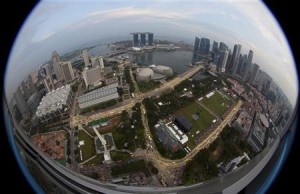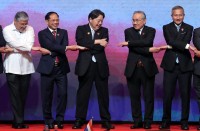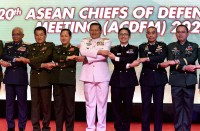(Courtesy ASEAN Secretariat) — The ASEAN Economic Community (AEC) is envisioned to be the realization of ASEAN economic integration by 2015.
To guide the establishment of the AEC 2015, the AEC Blueprint was adopted in 2012 and serves as a master plan by underlining a strategic schedule of priority actions to be undertaken by the ASEAN Member States.

The establishment of the AEC 2015 is being pursued under four pillars. The first pillar envisions ASEAN as a single market and production base, one where goods, services, investments, and skilled labour are able to flow freely, and capital, freer, within the region. It is also enhanced by cooperation in the areas of customs, standards and conformity assessment, priority integration sectors, and in food, agriculture and forestry.
The AEC, through its second pillar, aims to form an economic region that is highly competitive. This is done by fostering a culture of fair competition; consumer protection; stimulating and promoting innovation; and providing regional public infrastructure through multimodal transport infrastructure linkages, connectivity and energy cooperation. The third pillar builds on the region’s aspiration for an AEC that is inclusive and equitable. It focuses on efforts to support small and medium enterprises, as well as the newer ASEAN member states, to participate effectively and gainfully in the integration process.
Finally, recognizing that ASEAN operates in an increasingly global environment, the fourth pillar focuses on developing and adopting a coherent approach towards external economic relations, and enhancing participation in global supply networks. Several initiatives have been undertaken to bring the region closer to the goals of the AEC 2015.
The ASEAN Trade in Goods Agreement (ATIGA), in force since May 2010, has led to significant tariff elimination among ASEAN countries, and has contributed to the on-going efforts to address non-tariff measures in the region. The ASEAN Framework Agreement on Services (AFAS), signed in 1995, has eased restrictions to cross‐border services trade in various sectors such as business services, construction, health care, maritime transport, telecommunications, tourism, and financial services.
The ASEAN Comprehensive Investment Agreement (ACIA), which came into effect in March 2012, articulates member states’ commitments in terms of liberalizing and protecting cross-border investment activities while embracing international best practices in the treatment of foreign investors and investment. Implementation of the AEC Blueprint measures has not been without challenges, and the reality is that full implementation of all AEC measures by end-2015 may not be viable.
The formal establishment of the AEC in 2015 is therefore not a static end goal, but an ongoing process that requires continuous reinvention of the region to maintain its relevance in an evolving global economy. Looking at the decade ahead, ASEAN will strive to build on the early gains from the AEC 2015 as well as be forward looking in anticipating new opportunities and challenges. The post-2015 agenda would thus include a clear strategy to address any unfinished agenda from AEC 2015 which are deemed critical in deepening regional economic integration. Furthermore, institutions, adequate resources and effective planning are imperative to ensure successful outcomes of the community building process, beyond the establishment of the AEC 2015.
(Note: From ASEAN Secretariat News –– “Understanding the ASEAN Economic Community (AEC) 2015” is a series of articles highlighting the various initiatives undertaken as well as the progress made towards achieving the AEC by the end of 2015. The articles will touch on the different aspects of the wide-ranging and multifaceted regional economic integration process. Indeed, ASEAN’s economic integration agenda has significantly evolved from its initial focus on trade liberalisation and currently covers a broader array of issues ranging from investment to labour migration to Intellectual Property Rights (IPR).
These articles are written in a clear and simple format with minimal use of technical jargons. Those who wish to have more detailed information on the issues discussed may access them via the links to relevant documents provided in each of the articles.
It is hoped that this series of articles will provide all stakeholders of AEC, be it the business community, scholars, students or the general public, a better understanding of what AEC is all about and how it will impact their lives.)
Link: http://www.asean.org/images/2015/July/Understanding_AEC_2015/Edited%20Introduction%20to%20AEC.pdf








